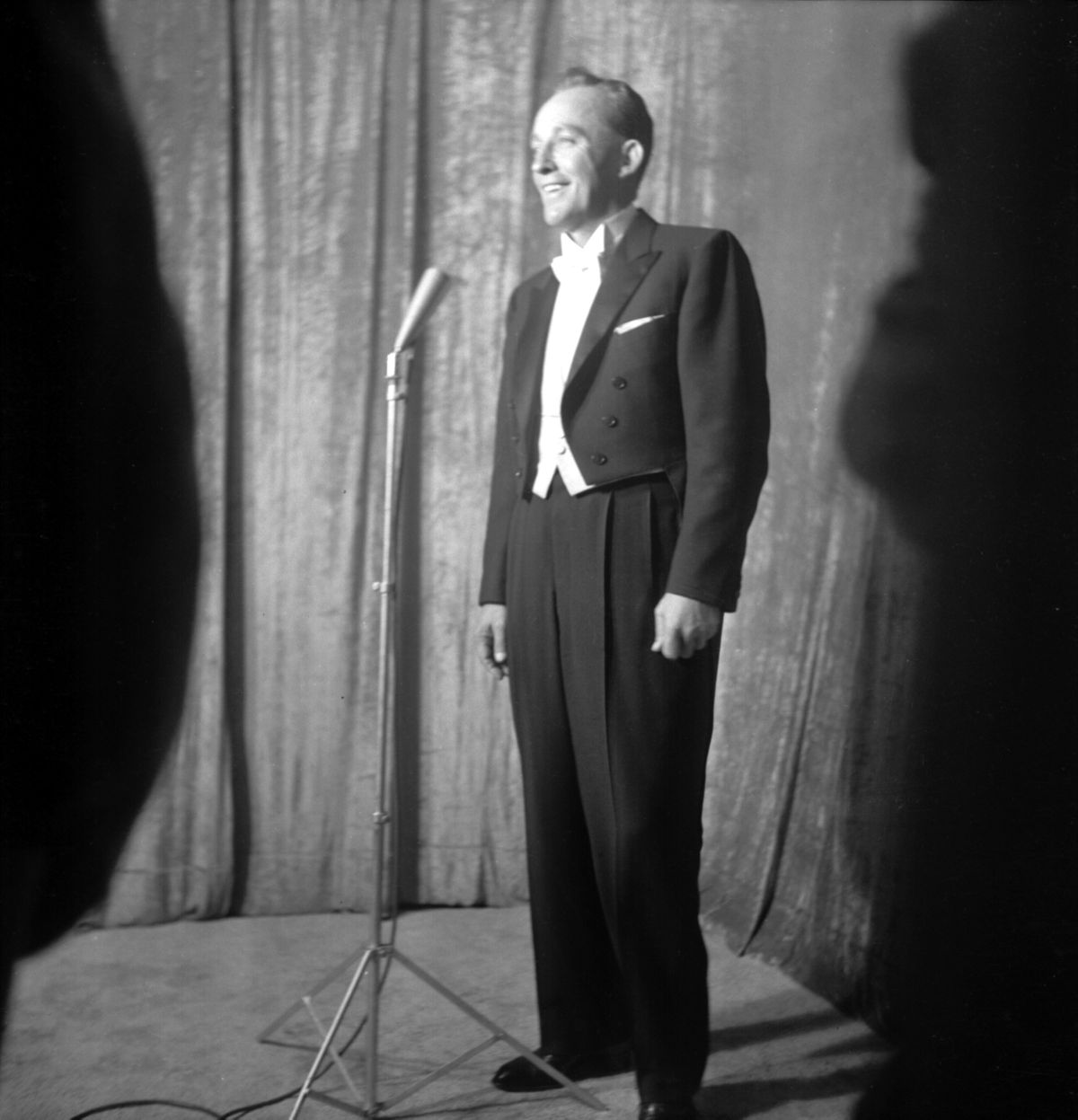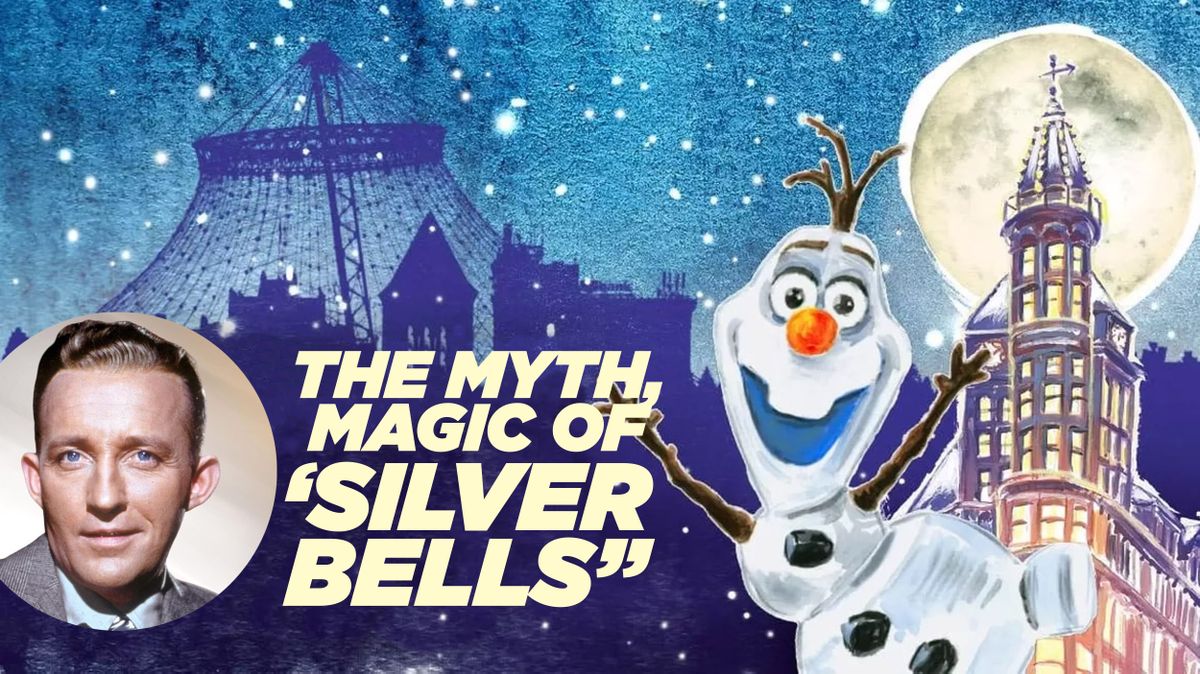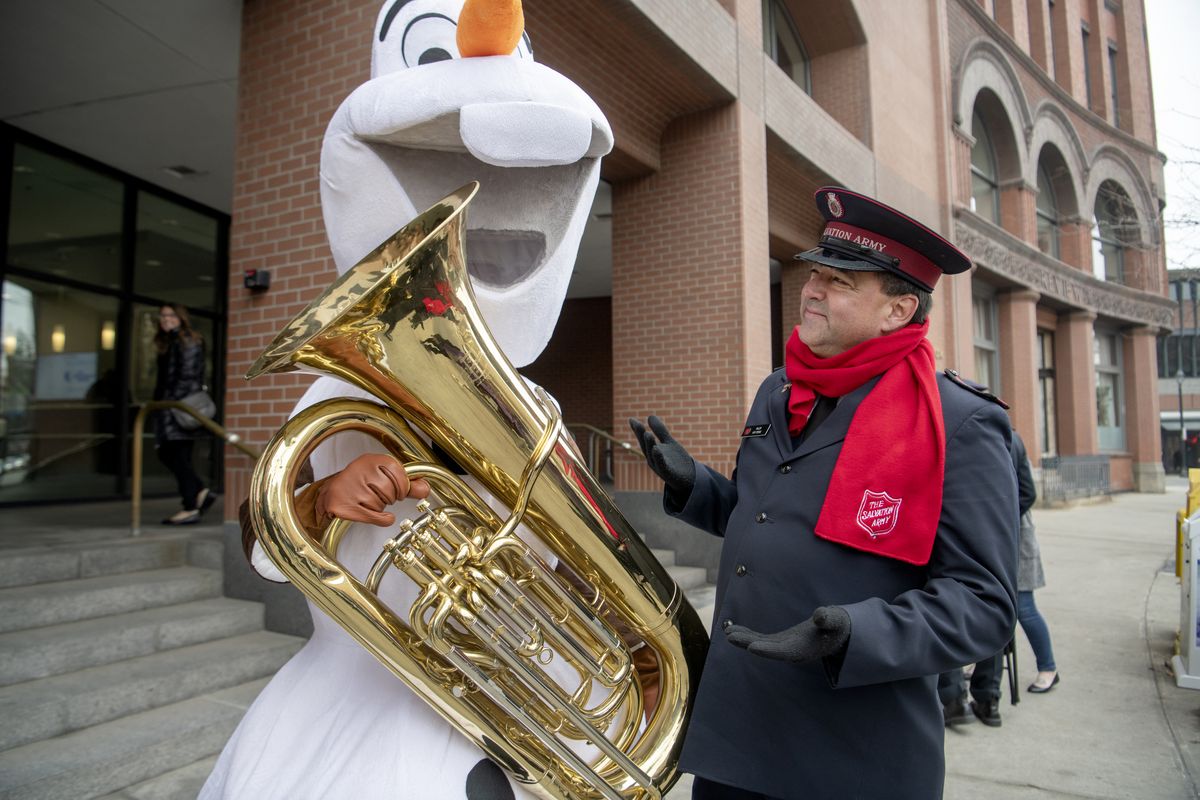This column reflects the opinion of the writer. Learn about the differences between a news story and an opinion column.
Rob Curley: Embracing the myth of ‘Silver Bells’
Spokesman-Review editor Rob Curley, left, dressed as Olaf from “Frozen,” clowns around with Salvation Army Major Ken Perine during bell-ringing on Nov. 15, 2018, in front of The Spokesman-Review building. ( Jesse Tinsley/THE SPOKESMAN-REVIEW)Buy a print of this photo
It was one of those stories that was so good, your only hope is that it’s true.
Though it also should be noted that when I first heard the great anecdote, it was pretty cold outside, a band was playing on the sidewalk next to me, I was ringing a bell and may or may not have been wearing an 8-foot-tall Olaf the snowman costume.
It was back in November 2018 when a bunch of folks from across downtown Spokane businesses worked together to help draw attention to the Salvation Army’s annual Kettle Kickoff fundraising efforts in a friendly contest to see who could bring in the most money for the charity.
We all can agree no one wants to get beat by an accountant, banker, doctor or the mayor, so when I was asked to be a part of all of this, it meant winning at all costs – even if a gigantic Disney character needed to make an appearance in order to juice things up a bit.
If you think people like to tell stories to newspaper reporters, you should see how they react to Olaf. People talk to Olaf. He loves warm hugs. Trust me, Olaf hears all the good stuff. He’s the Barbara Walters of animated snowmen.
I’m shivering on the sidewalk in front of our newspaper, trying to convince as many people as possible to drop money in my kettle. Not the kettles being represented by people who can’t properly conjugate a verb.
The Salvation Army band had just finished playing “Silver Bells.” People were dancing. I was bouncing.
That’s when I was told the story, which was difficult to hear because he was looking straight into Olaf’s beautiful eyes as he told it, even though my eyes and ears were actually behind the costume’s mouth.
“Did you know that when Bing Crosby wrote ‘Silver Bells,’ he wrote it after hearing the Salvation Army’s bells while here in Spokane during Christmas?”
The cardinal rule of costumed characters is that you don’t talk. But how do you not respond to that?
“No $#1+,” Olaf said.
Well, that sealed the deal. Disneyland is never hiring me to dress up as Mickey Mouse.
But how could I possibly react any other way?
When I finally got back to the newsroom, I asked others if we had ever told this amazing story I had just heard. You see, we’ve only written about a gabillion Bing Crosby stories over the years, so as soon as you pitch one to our editors, you’re told that we wrote that exact story 11 years ago. And we wrote another version in 1983 and possibly back in ’68.
We’re going to need to check the microfiche.
Remarkably, no one had heard this one before. At that moment, I was both excited and nervous.
That’s what happens when you begin to wonder if a story is too good to be a true.
Either way, it would have to wait. Target and most of the other stores might start putting out Christmas decorations the week before Halloween, and a week earlier than that each year, but a newspaper doesn’t start telling Christmas stories until after Thanksgiving.
Some things have to remain sacred, especially when the world’s greatest Christmas crooner is from your hometown.
I began asking others around town if they’d ever heard the incredibly local origin story behind “Silver Bells.” To my surprise, many had. There was a chance the story was true!
Finally, we get to the week before Christmas. You all know the drill. The Spokesman-Review is mandated by local law to write at least one Bing Crosby Christmas song story a year. During this exact week.
If we don’t, folks start calling someone whose first name rhymes with “lacey” and last name rhymes with “bowls.”
That year, our annual Bing story would be the origin of “Silver Bells.” And I was going to write it. My first Bing story for this newspaper was going to be a humdinger with a little “ring-a-ling.”
The research began.
The very first thing you figure out is that “Silver Bells” isn’t actually written by Bing Crosby, let alone by Bing Crosby after hearing those iconic bells during a Christmas in Spokane. And it doesn’t take much effort. All you have to do is actually look at the record.
Ugh.
The problem is, I was emotionally invested in this story. Even if it wasn’t true.
To make matters worse, Bing wasn’t even the first to perform “Silver Bells,” but that’s a little complicated, as well.
“Silver Bells” was written by Jay Livingston and Ray Evans in 1950 for the movie “The Lemon Drop Kid” starring Bob Hope and Marilyn Maxwell. But the movie wasn’t released until 1951.
By that time, our boy Bing had not only recorded his classic version with Carol Richards, it had become a huge hit.
Bing was a massive star at this time. He was the nation’s first true multimedia superstar. The guy recorded more hit songs than Elvis, the Beatles and Michael Jackson, and even won an Academy Award.
Because of Bing, “Silver Bells” was so popular before the movie debuted that Hope and Maxwell were summoned back to Hollywood to reshoot the original scene with the song in it so it could become the new focal point of the film.
Even though the movie was going to be released in March.
That’s not the best part of the story, though.
The original name of the song was “Tinkle Bells.” Come on, be honest, you just giggled, right?
So did the wife of one of the song’s writers. She explained to her husband that tinkle meant something very different to most other people.
The original title was flushed, and silver was now in.
Was there at least any truth to the part of the story about the Salvation Army’s iconic bell being the inspiration?
Kinda.
In several interviews, Livingston always said that was exactly the inspiration behind the song … only from bell-ringing Santas in New York, not Spokane.
But Evans once explained in an interview with NPR that the song’s origin started with a bell that sat on a desk shared by Livingston and himself.
How did Bing end up recording the song, anyway? The guy knew a great song when he heard it. And with his golden touch, you didn’t say no to Bing if he wanted to record one of your songs. Even if it was a song really written for Bob Hope.
What makes “Silver Bells” so classic is how many different artists have performed it through the years and what those different versions mean to different people.
My kids had never heard Bing’s version. The “ring-a-ling” they hear in their heads is the 1966 version recorded by Kate Smith that appeared in the movie “The Polar Express.”
What version do I hear in my head? That’s easy.
The version that Bing Crosby wrote after being inspired by the sweet sound of the Santa bells during a visit to his beloved hometown during the holidays.



